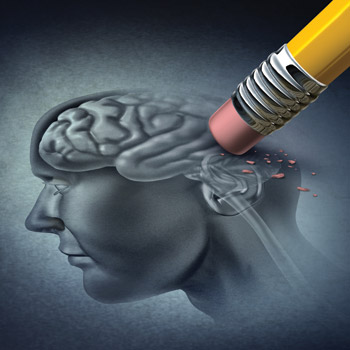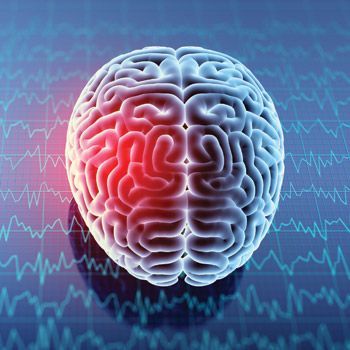Major shift in thinking about cognitive impairment
Because neurocognitive decline can have a variety of etiologies, a new definition by the DSM-5 defined mild cognitive impairment as a syndrome, and then drilled down to its etiology.
A changing mindset about mild cognitive impairment (MCI) is altering how doctors think about the brain.
Cognitive impairment has new entries in the DSM-5, new research guidelines, and new technologies to scan for its biomarkers, all offering physicians a new view on what mild cognitive disease is, when it happens (it's sooner than you think), and what they can offer patients, said Ronald C. Petersen, MD, PhD, of the Mayo Clinic College of Medicine in Rochester, Minn.

“MCI is not meant to be early Alzheimer's disease. But back when I was in training, there was ‘normal’ or ‘dementia’; that was it,” he told an audience at the American Academy of Neurology's annual meeting in Philadelphia in May.
Dr. Petersen took attendees through a diagnostic matrix and moved on to examine how changes can impact clinicians' treatment of mild neurocognitive disorder, one of the new terms replacing the more familiar words “mild cognitive impairment.”
The DSM-4 focused just on the dementia phase of the disease, Dr. Petersen said, while the DSM-5 expanded clinical considerations into the realm of predementia. “The new term, ‘mild neurocognitive disorder,’ is essentially MCI,” he said. It describes a patient with simple cognitive impairment in a single domain who can maintain independence in activities of daily living.
Major neurocognitive disorder is essentially dementia, he continued. It consists of significant cognitive impairment in one or often multiple cognitive domains, and patients lose their independence.
“Preservation of independence was really the distinction between mild and major,” Dr. Petersen said of the new DSM-5 criteria. “Could the person continue to do what he or she had been doing?”
Etiology and diagnosis
Because neurocognitive decline can have a variety of etiologies—a patient with HIV infection will need a different course of action than a patient with traumatic brain injury—the DSM-5 definition had to be extremely broad to capture all of them.
“The important aspect of what DSM did was say, as clinicians, let's call this a syndrome, and then let's drill down and see what's causing that syndrome,” Dr. Petersen said. “That makes sense in the field still.”
When assessing a patient, he first takes a medical history, with special emphasis on the patient's age.
Next, “When you talk about their functional activities, are they paying their bills? Are they doing their taxes, so everything seems fine? They don't seem like a dementia person,” he said. A mental status evaluation and possible neuropsychological testing follows, “because you may want a more precise delineation of what are their strengths and weaknesses.”
Next, he considers the involvement of memory in MCI. “… [M]any people come in and say ‘Gee, my memory isn't quite what it used to be.’ But after you tease out a bit of the history, you realize they aren't talking about memory. They are talking about attention, concentration, maybe language. ‘I can't get the words out. I can't translate my thoughts into words.’ You as a clinician know it's not memory, it's another cognitive domain.”
After the syndrome has been characterized, the clinician should pursue what is causing it. Is it a degenerative disease? A gradually progressive one? Is the person in the expected age range for cognitive impairment? Is there a vascular component, psychiatric aspect, medical condition, or head trauma? “If it's a gradually progressive history, involves largely memory, in the right age group, odds are, we're talking about an amnestic MCI, a degenerative etiology,” he said.
Early symptoms of Alzheimer's disease, which is currently described as a clinical pathological syndrome, are a large subset of what Dr. Petersen sees in practice. “But in 2019, that may be changing. What you and I call Alzheimer's disease definitively now may be changing some,” he said.
For almost three decades, Alzheimer's disease was defined as having gradual onset, usually with memory impairment, with involvement of other cognitive domains during progression to functionally impaired dementia.
“We did a rule-out: Did you have any stroke? Did you have a brain tumor?” he said. “What are your medications, what other mental comorbidities? They don't seem to be painting a picture; this must be probable Alzheimer's disease.” The word “probable” was applied, he continued, because a definitive diagnosis occurred only during an autopsy, when the brain could be examined for amyloid plaques.
Neuroimaging
What's changed is that physicians can now use a variety of scanning technologies to see amyloid plaques in the brain, and research has shown that they may predate clinical symptoms by 10 to 15 years. “There's a big window of opportunity there,” Dr. Petersen said.
The new technology set the stage for the 2018 publication of a research framework that predicts where medical treatment is headed. “NIA-AA Research Framework: Toward a Biological Definition of Alzheimer's Disease” was published in Alzheimer's & Dementia and was created by a working group of the National Institute on Aging and the Alzheimer's Association. The framework states that Alzheimer's disease is a biological entity defined by positive biomarkers for amyloid and tau and offers a rationale to define Alzheimer's disease and stage its progression.
Patients at stage 1 are “squeaky clean normal,” but they have a positive amyloid scan or tau present in a cerebrospinal fluid test, Dr. Petersen said.
At stage 2, patients are noticing changes. This is when they usually first present to Dr. Petersen, saying, “I'm not quite what I used to be.” There is a subjective cognitive decline, or they have neurobehavioral symptoms, such as apathy, anxiety, or dysphoria, he said.
Stage 3 is essentially what physicians consider to be mild cognitive impairment. And stages 4, 5, and 6 are mild, moderate, and severe dementia.
The paper also described the A/T/N framework, the amyloid/tau/neurodegeneration matrix, in which each factor can be positive or negative. These are the new features that the committee came to define as Alzheimer's disease, Dr. Petersen explained.
“[I]f someone is amyloid positive/negative, tau positive/negative, neurodegeneration positive/negative, you get eight combinations of A, T, and N, right?” he said. “This is a dizzying picture of what might be going on.”
Physicians are leaning more on scanning technology today to determine MCI staging, Dr. Petersen said: structural MRI, functional imaging with FDG-PET (positron emission tomography with 2-[fluorine-18]fluoro-2-deoxy-D-glucose), and molecular imaging with amyloid PET imaging.
Structural MRI can identify atrophy and Alzheimer's disease stage. For example, a scan on someone with MCI might reveal atrophy of the hippocampus, while someone with dementia could show medial temporal atrophy with generalized atrophy as well. “And you can put numbers on these. You can be pretty precise,” he said.
FDG-PET doesn't define MCI, but it can help physicians with staging. It reveals areas of hypometabolism of glucose, which is the brain's source of energy. And again, it offers quantitative data, Dr. Petersen said.
AAN practice parameters
Dr. Petersen also reviewed the American Academy of Neurology's guidelines on MCI, which were published Jan. 16, 2018, by Neurology. The writing committee looked at over 1,150 studies to answer three questions:
- 1. What is the prevalence of MCI in the general population? The committee found 20 Class I studies that addressed this question and determined that overall, 15% to 20% of people ages 65 years and older in the U.S. qualified as having MCI.
- 2. What's the outcome? If a physician makes the diagnosis, what can he or she tell patients? For progression, the committee found nine Class I studies and determined that 10% to 15% of patients with MCI per year might progress to dementia.
- 3. What can a physician do about it? What treatments are there, pharmacological and nonpharmacological? The committee found 10 Class II studies and one Class I study for the former and noted that drug treatments are off-label for cognitive impairments. Four Class II studies found evidence for using exercise and other intellectual activities.
“While many proponents will say if we can cure Alzheimer's disease … I don't think it's that simple,” Dr. Petersen told the audience. “Amyloid/tau is a very important component, but I think that's only part of the picture. Ultimately, down the road, we're going to need to have insights into each of these biological entities. The biomarkers are moving in that direction.”





